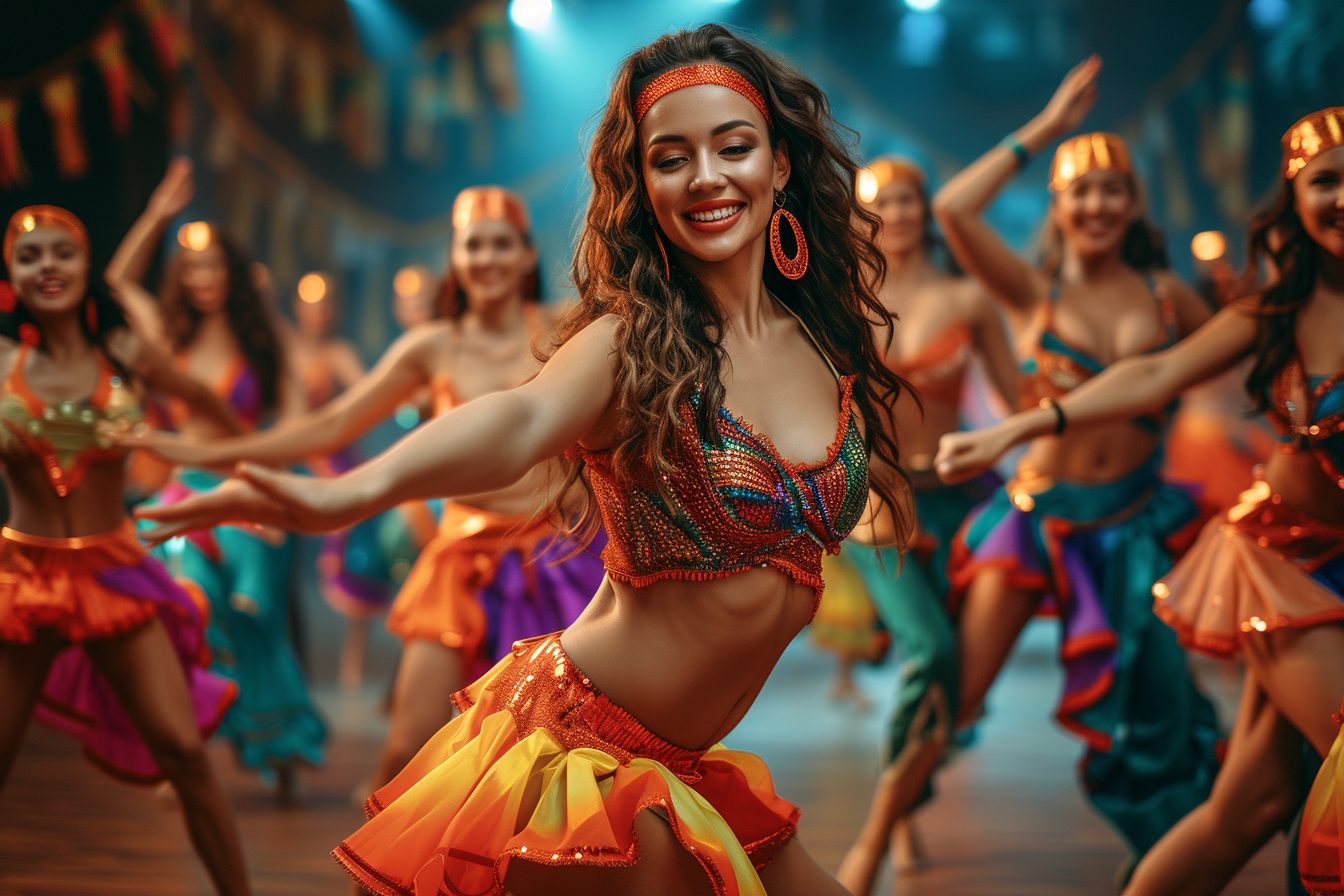Latin dance is a captivating art form that encompasses a variety of styles, each with unique steps, rhythms, and cultural significances. From the energetic salsa to the sensual bachata, Latin dances are enjoyed all over the world for their passionate expression, intricate movements, and rhythmic beats. Let’s delve into the rich tapestry of Latin dance, discovering the essentials that make these styles so beloved and revealing the nuanced world of Latin rhythms and movements.
Vibrant and varied dance styles

Salsa is undoubtedly one of the most popular Latin dance styles. Originating from the Caribbean, it combines Afro-Cuban and Puerto Rican dance elements. Typical of salsa is the dynamic partner work and rhythmic foot patterns set to a lively tempo. Dancers often incorporate spins, intricate turn patterns, and flourishes to showcase their skill and connection with the music.
Moving a bit slower is the Bachata, originating from the Dominican Republic. It stands out for its romantic and emotive style. The dance is characterized by a close embrace, side-to-side hip movements, and a repetitive four-step beat with a tap on the fourth step. The intimacy of bachata provides a platform for dancers to express subtle nuances and deep emotions through their body movement.
Tango, while often associated with Argentina, has a style known as the Argentine Tango that has distinctly influenced Latin ballroom dancing. Argentine Tango is filled with dramatic poses, sharp movements, and profound intimacy. Dancers engage in a dialogue of push and pull, wrapping their legs around each other in intricate patterns known as "ganchos."
The Cha-cha-cha, or simply Cha-cha, is a flirtatious and playful dance with Cuban origins. Its name comes from the sound of dancers’ shoes as they execute the syncopated three-step shuffle from which the dance derives its character. Dancers maintain a steady beat, punctuating the music with hip motion and crisp, synchronized footwork.
Rumba is often referred to as the dance of love. It has Afro-Cuban roots and is slower paced, emphasizing body movements more than elaborate footwork. Rumba’s sensuality lies in the hip action, known as the "Cuban motion," and the storytelling performed through its expressive arm movements and dramatic pauses.
These are just a few of the most famous Latin dance styles, but the world of Latin dance is vast, encompassing other dances like Merengue, Samba, Reggaeton, and more.
Fundamental steps and movements
Each Latin dance style has fundamental steps that serve as the building blocks for more advanced dance patterns.
Salsa typically uses a quick-quick-slow rhythm, with the basic step featuring a forward and backward movement. Dancers maintain a steady beat with the music, often counting in eights as they move.
Bachata‘s basic steps involve a side-to-side motion that is accentuated with a hip lift on every fourth beat, as the dancer taps the foot without transferring weight.
In Tango, the ‘walk’ is a vital basic step, where dancers maintain a low center of gravity and a high level of connection through the chest area. Pauses and sudden changes in direction are common, making it a highly improvised dance.
Cha-cha requires a precise three-step pattern with the cha-cha-cha syncopation occurring in the fourth beat of the music. Dancers must master this timing to execute the style correctly, integrating the shuffle step fluidly within their movements.
Rumba is grounded on two basic rhythms: the box step and the side step. These foundational rhythms integrate slow-quick-quick timing, where the dancers’ emphasize hip action for expressive performance.
Rhythm and key musical elements
Rhythm in Latin dance is not merely about following the beat—it’s about embodying the music and expressing its nuances through movement. Latin dance music is rich and varied, with different instruments setting the tone for each dance style.
Salsa music often includes instruments like the clave, congas, bongos, trumpets, and trombones. The clave rhythm, consisting of either a 2-3 or 3-2 pattern, is the heart of salsa music and dance.
Bachata initially featured guitars, bongos, and maracas, but modern bachata has incorporated more diverse instrumentation. Regardless of arrangement, the emphasis remains on the downbeat, with dancers moving sensually to the music’s pulse.
The quintessential sound of the tango hinges on the bandoneón, a type of accordion that provides the melancholic and dramatic melodies synonymous with the dance.
The Cha-cha relies on the syncopation of the cowbell and the guiro to maintain its characteristic rhythm, while the horns and piano provide melodic support.
Rumba music is known for its slow tempo and soulful rhythms, with congas and claves providing the undercurrent for the dance’s sensuous movements.
The role of connection and emotion
Expressive connection is at the heart of Latin dance, both with the music and between dance partners. Dancers must develop a keen sense of musicality and an understanding of their own bodies to convey the right emotions and maintain harmony with their partners. This interpersonal aspect creates a dance conversation where leads and follows must be equally attuned to each other’s movements and impulses.
In salsa, the connection is lively and dynamic, with partners engaging in a playful call-and-response through their turns and shines (solo footwork sequences).
In bachata, the connection is more intimate and emotional, with partners often executing moves in close proximity, requiring a high level of trust and coordination.
Tango emphasizes a close embrace, with partners maintaining physical contact at all times, interpreting the music’s dramatic ebb and flow through their sustained connection.
The Cha-cha demands a cheeky and energetic interaction, where dancers flirt with each other using eye contact, facial expressions, and synchronized footwork.
For rumba, dancers focus on a sensual and communicative connection, using slow, sustained movements to create an air of romance and longing.
Engaging in Latin dance is a journey of rhythm, movement, and emotional expression. As dancers navigate through the vibrant landscape of salsa, bachata, tango, cha-cha, and rumba, they discover not only the rich cultural heritage of these styles but also the depth of their own expressive capabilities. Latin dance teaches us about synchronicity, musical interpretation, and the art of non-verbal communication. Whether a seasoned dancer or a newcomer, the adventure of mastering Latin dance essentials promises a rewarding and passionate exploration into the world of rhythm and connection.











